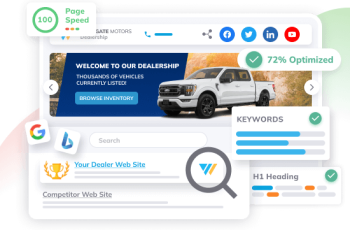Offsite Optimization for Your Dealer Website

Previously we explained how to use onsite optimization correctly and by using this you will increase your online presence. When it is done properly, the website is available on the Internet and is indexed by the search engine robots, so you can now proceed to the next Search Engine Optimization (SEO) level, offsite optimization. As the name implies, offsite optimization involves everything that lies outside of the website. It is more difficult to influence the offsite parameters than any issues that may appear with onsite optimization. So what should dealers know about offsite optimization in order to promote their websites properly?
Onsite optimization covers all of the smallest details which are present on your website and which notify the search engines about your site’s existence. These details are: all the content on a website, tags, user interface and design, keywords, website’s loading time, internal links and navigation, etc.
Offsite optimization, on the other hand, includes all of the marketing techniques, as well as the link building methods that are used outside of the web resource. Offsite optimization includes the following:
- Competitive analysis;
- Link building strategies, backlinks and inbound links;
- Press releases and articles that contain links to the website;
- Posts in social media;
- Keyword analysis;
- Comments and links on other sites, blogs and forums;
- Optimized videos, placed in social networks;
- RSS feeds;
- Paid campaigns by keywords.
With offsite optimization the following aspects are essential and should be taken into account:
- The number of websites that have a link to your site. The more links that lead to you, the better. However, some people try to increase this number by setting links from internal pages to the main webpage. But you won’t achieve the desired results by interlinking because search engines take into account the IP address. Otherwise, you could make a website with 1000 pages and set 1000 links from them to the main page. For the same reason, links from the “mirror” sites are not considered at all.
- What resources link to your site. With offsite optimization you should pay attention to the topics of the websites that have a link to yours. So if you deal with vehicles, a link to your dealer website in the text on the high fashion week site will have a reverse effect and your website’s ranking will decrease. It is very important to get links from relevant sites, or at least websites with overlapping topics.
- The pages that have a link to your website. With offsite optimization it’s important to pay attention to the webpage that links to you. It’s great if this is on the main page. It’s even better if the page name contains the keywords that fit you. It’s really ideal when both of these parameters are met.
- The anchor text of the links. The anchor text refers to the words placed in the link to your website. With offsite optimization the anchor text must have a main keyword. E.g. if one of the keyword phrases on your website is “best used SUVs”, the anchor text must be “best used SUVs”, and not “best dealer website”.
- The total number and type of links on the websites that link to you. An important guideline with offsite optimization is the total amount of outbound links. The less their number is, the more valuable links from such a resource will be and the greater impact it will have on your PageRank.
To optimize your dealer website properly you need to use both optimization types, onsite and offsite. First of all, you should focus on your onsite presence, then develop your content marketing (or onsite optimization) and after that you can go to the offsite strategies and develop link building techniques that will be successful. Autoxloo is a leading SEO expert in the market of software solutions for the automotive industry. We provide high quality SEO services and on onsite and offsite optimization for dealerships. We use the latest proven methods and tools to achieve the best possible results in positioning dealer websites locally and increasing their total number of conversions and sales.



 Search ads
Search ads Mobile ads
Mobile ads